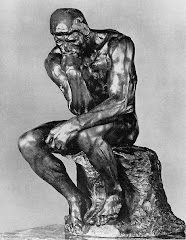
A FEW THOUGHTS ON THE SYMBOLISM OF THE ROSE, Part 1
A Bouquet of Roses: Auguste Renoir
The flower that most powerfully gripped the poetic vision & mystic reverence of the west, is the Rose.
Alongwith the Cross, the Sacred Serpent (or Dragon), the Circle, and the Eagle, the Rose is the most complex & popular of all religious, mystic, esoteric, & cultural symbols of the western world.
As a symbol of Venus, of Sexual Love & Eroticism, of the Yoni, and of fertility & fecundity, the rose has been largely phallicized & over-simplified.
It might stand for all these things, but there are deeper depths to this luminous image & representation of Beauty. For the men of wisdom, the brethren of divine knowledge, initiates into the mysteries of the universe, and hierophants who held the keys of gold & the keys of silver, the rose meant much, much more.
It was a symbol of Perfection: of the Man who has attained moral & spiritual Perfection: of his soul.
For, of all flow
 ers that illuminate Nature, the Rose was always considered the most beautiful, & the most perfect.
ers that illuminate Nature, the Rose was always considered the most beautiful, & the most perfect.And so, the most perfect of all men - and the perfected human soul - were symbolized by the Rose.
Logically, it was a living symbol of perfect Harmony - of the harmony that is fundamental to God's creation.
The harmony that can be grasped only through the light of highest knowledge - and stands as a living testament to God's Presence in Its Universe.
A Glass of Roses on Gold Cloth: by Martin Johnson Heade
And thus, wrote Albert Pike, "The Rose was for the Initiates the living and blooming symbol of the revelation of the harmonies of being. It was the emblem of beauty, life, love, and pleasure."
In the context of the Roman author Apuleius' novel The Golden Ass, this makes perfect sense.
In the novel, also known as The Metamorphoses, the author, obsessed with magic, accidentally gets transformed into an ass. Towards the end, he invokes the help of the Egyptian Goddess Isis. Isis gives him a rose to eat, after eating which he is transformed into an enlightened human being.

Meditative Rose: by Salvador Dali
Apuleius clearly adopts the Rose as a symbol of Divine Wisdom, & its transformative power.
To eat the rose is to ingest & absorb knowledge about God & God's ways, of the true nature of the Uncaused Cause, of Creation, of the human soul of the fundamental & occult laws of nature.
To meditate upon the rose is to meditate upon the Law by which the Universe is governed, to meditate upon the fundamental harmony, unity, equilibrium, & hence, beauty & truth of the All, through which Man can attain to a vision of the Highest.
In the context of The Metamorphoses, it may also be considered a symbol of Divine Vision, or Divine Revelation, like the one granted by Krishna to Arjuna - in which Arjuna contemplates & grasps the infinity, immensity & glory of the Word, of the Divine, of the One beneath the All & the Many - which vision becomes the final cause of his transformation & spiritual re-generation.
The Rose has also been called the symbol of Dawn, and there is more to this than the fact of the roseate splendors of sunrise. Dawn has been traditionally called "rosy-fingered", & the rose has always been sacred to Aurora, but that's not the principle reason.
The conception of Dawn is to be understood, not as a literal ascension of the Sun above the ring of the horizon, but as the onset of spiritual enlightenment. The Dawn itself is a symbol, for e.g. in the Rig Veda, of the emergence of spiritual illumination. The Rose, and Dawn, symbolize the coming forth of Light from Darkness - of the integrity & coherence of wisdom from the chaos of ignorance - of vision & clarity from blindness & misperception - of right discrimination from confusion & doubt.
In this sense, Rose & Dawn are symbols of Birth, and further, Re-birth.
In Theosophy, the Rose, is the western equivalent of the Oriental Lotus, which is a symbol of "the emanation of the objective from the subjective; divine ideation passing from the abstract into the concrete or visible form".
In other words, the rose is a symbol of manifestation, blossoming, or EPIPHANY.
The Birth of the New Man, of the New Age, of God in humanity, of the New World.
Manley P. Hall writes, "The fact that flowers blossom by unfolding has caused them to be chosen as symbolic of spiritual unfoldment." And so, the rose-bud is a symbol of potential, of divinity enfolded in the heart of humanity - while the full-blown rose symbolizes complete spiritual unfoldment -- the complete unfolding to & into Absolute Truth, Love & Bliss, i.e. complete self-realization.

La Rose Cosmique: My beautiful friend Marina. Whenever I think "Rose", I think "Marina".
By logical corollary, the Rose is a symbol of RESURRECTION.
Of the resurrection of the Sun of the Spirit from the Night, the death-sleep of material existence unpenetrated by the Truth of God.
The rising up of Life out of Death, --- of the Second Birth of Man - Birth into the higher reality of Cosmic consciousness & Buddhahood or Christhood, -- of the donning of new shining garments of Universal Love & Absolute Truth after discarding soiled, stained garments of limited, finite love & wisdom.
Of the birth of the New Self. That is, of resurrection.
In this context, Albert Pike wrote that the deeper meaning of the Cross was that it was a glyph of LIFE: "of that life that emanated from the Deity, and of the Eternal Life for which we all hope; through our faith in God's infinite goodness".
Hence, the Rosicrucian heiroglyph of the Rose-Cross means the Dawn of Life Eternal.





